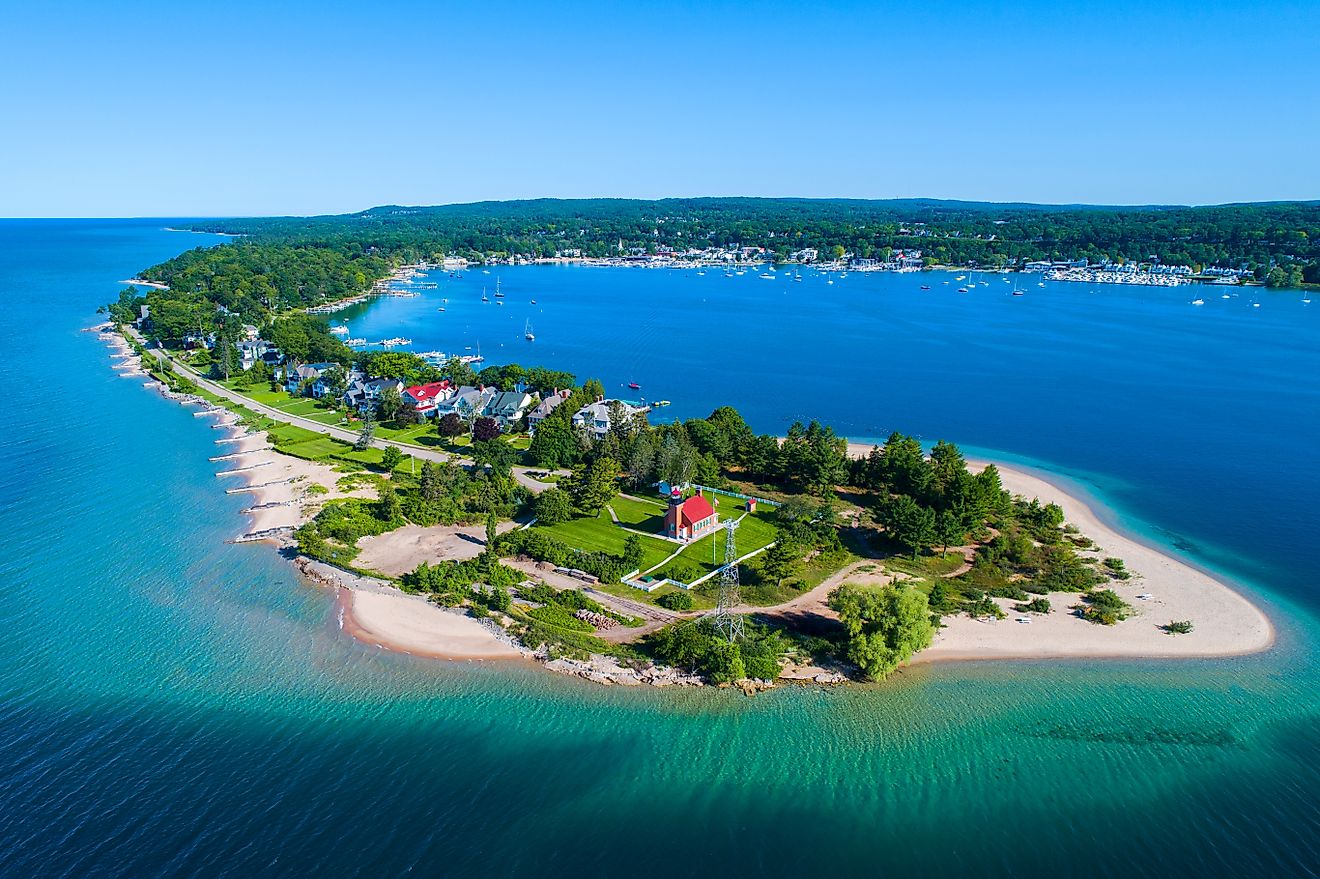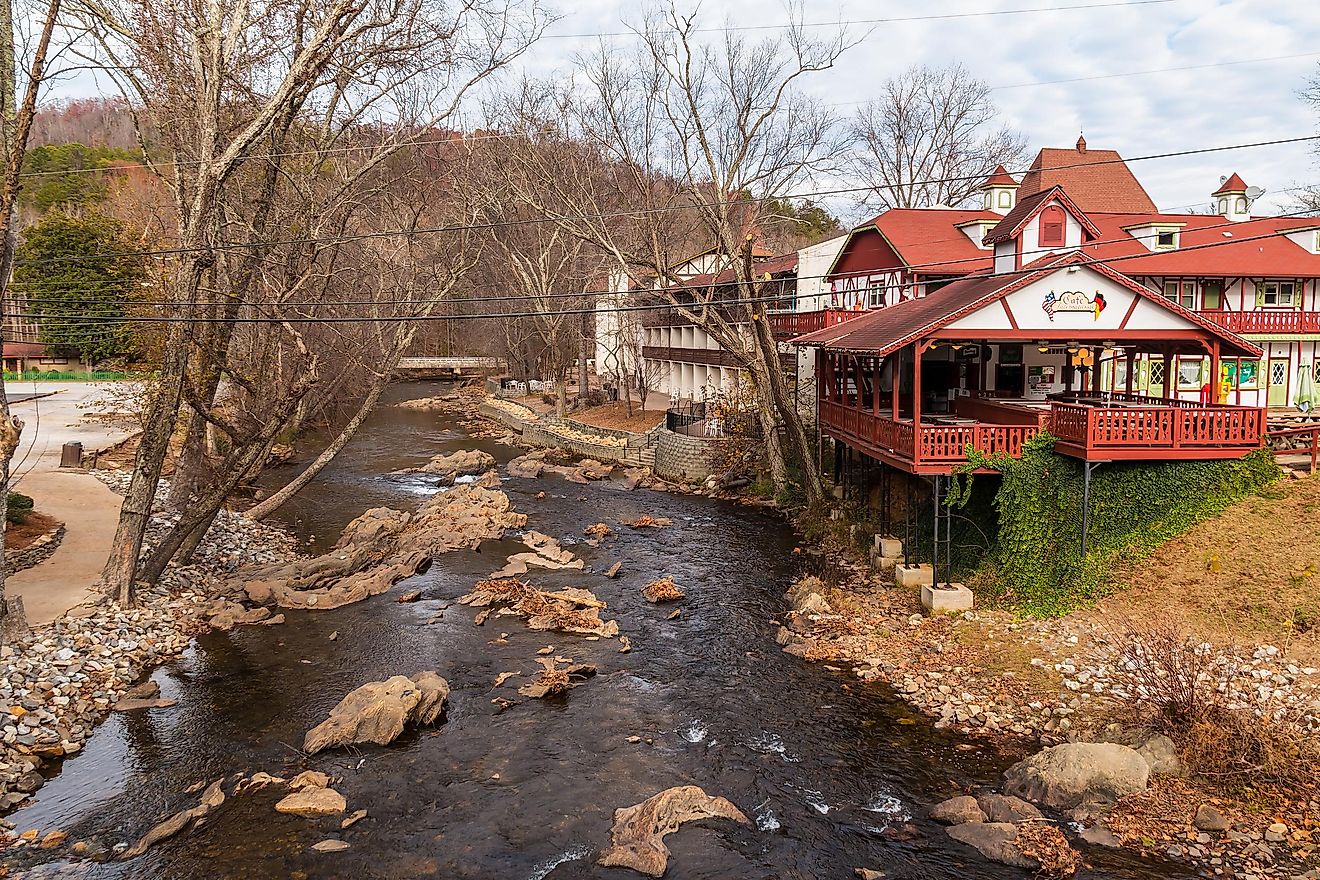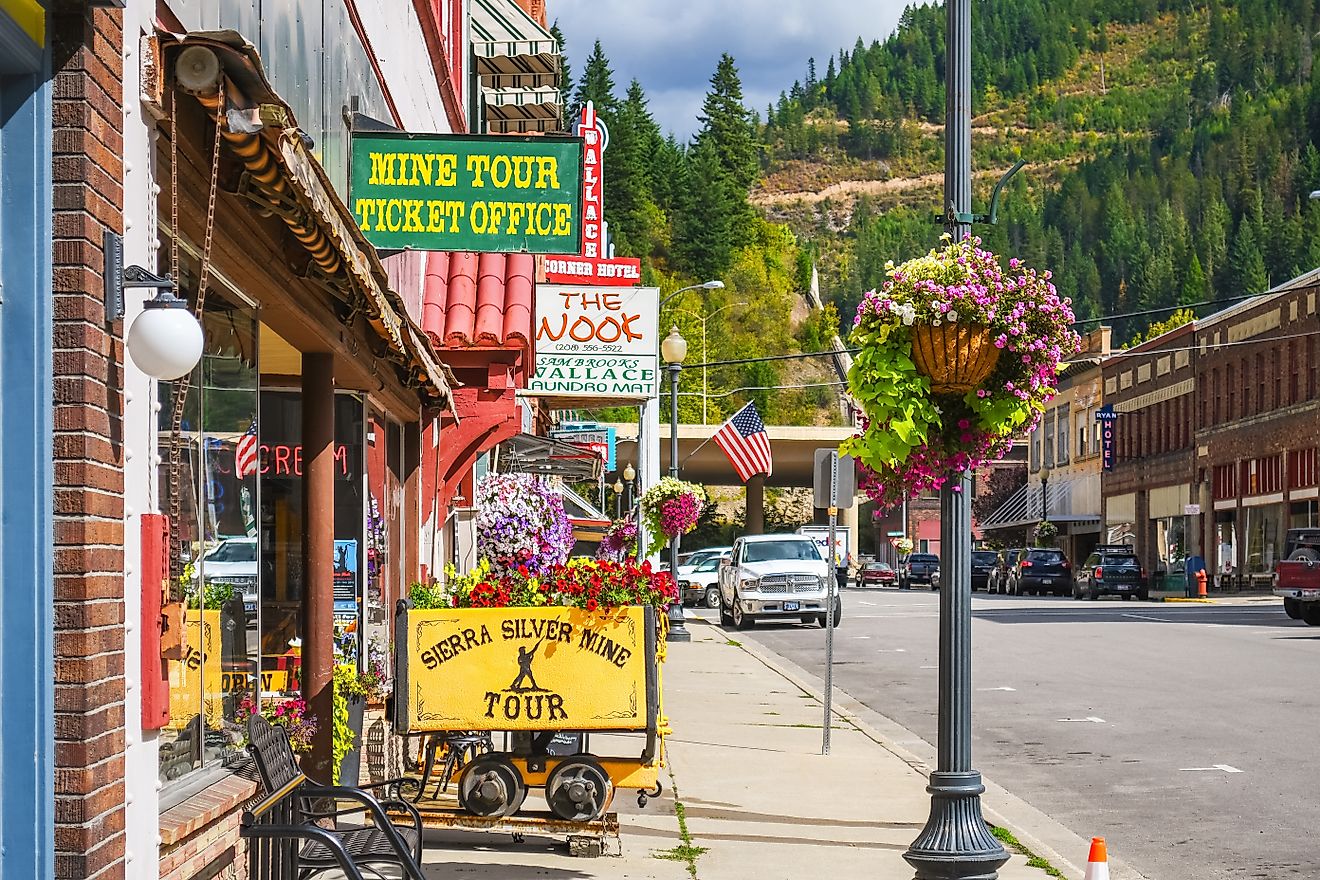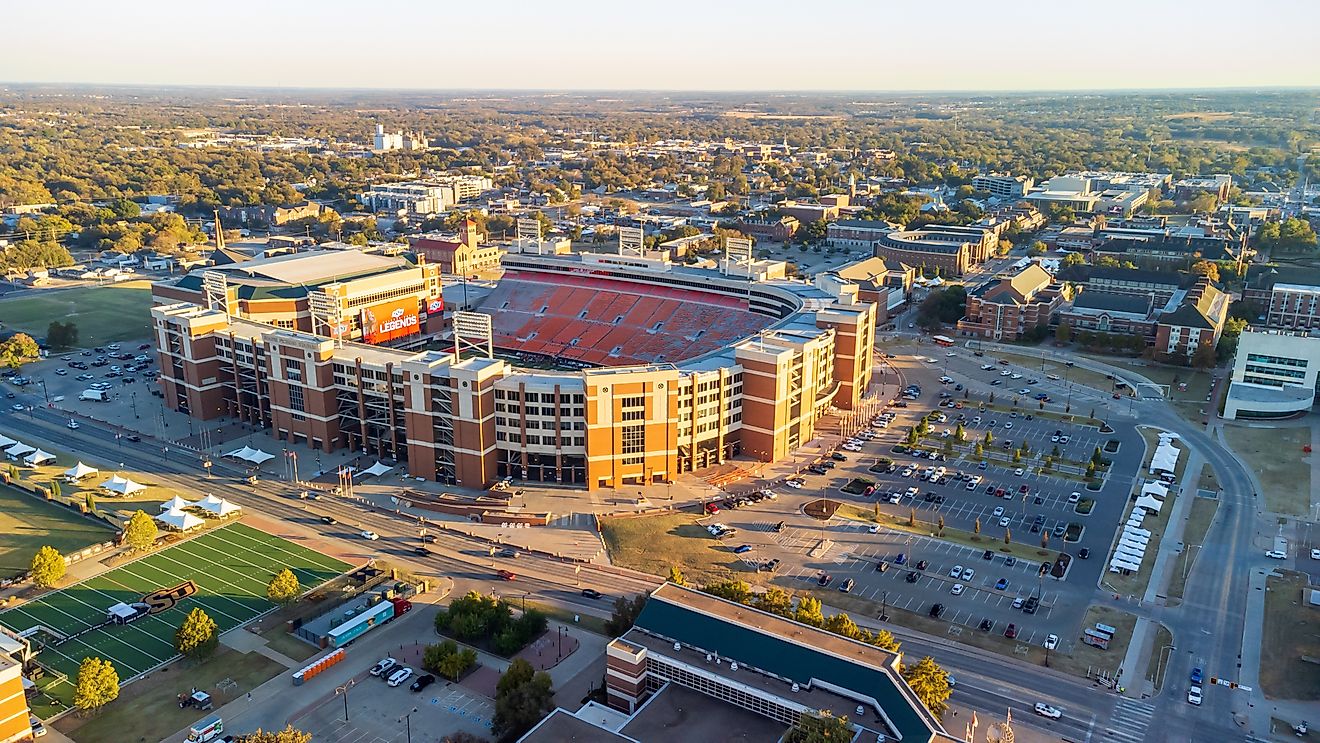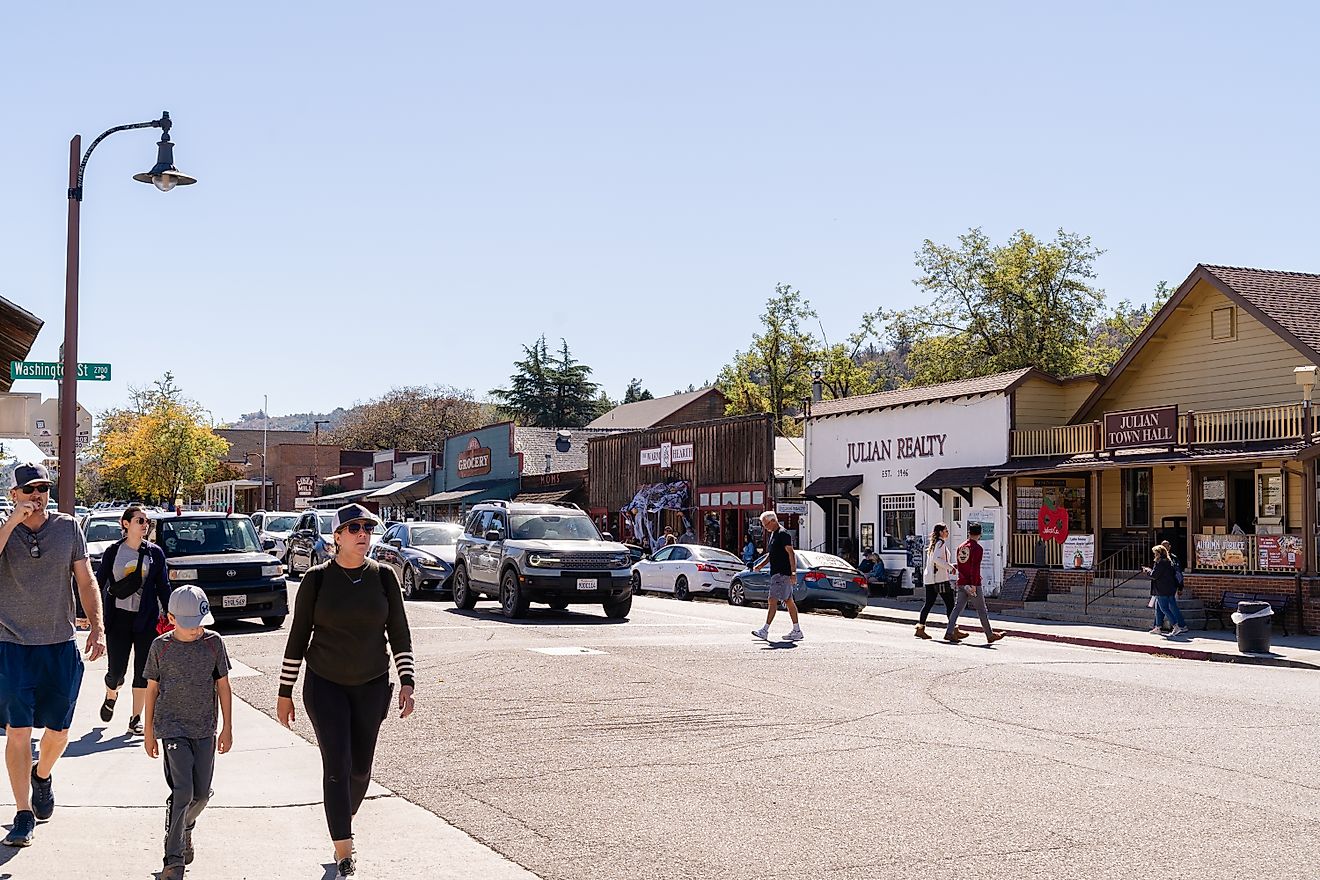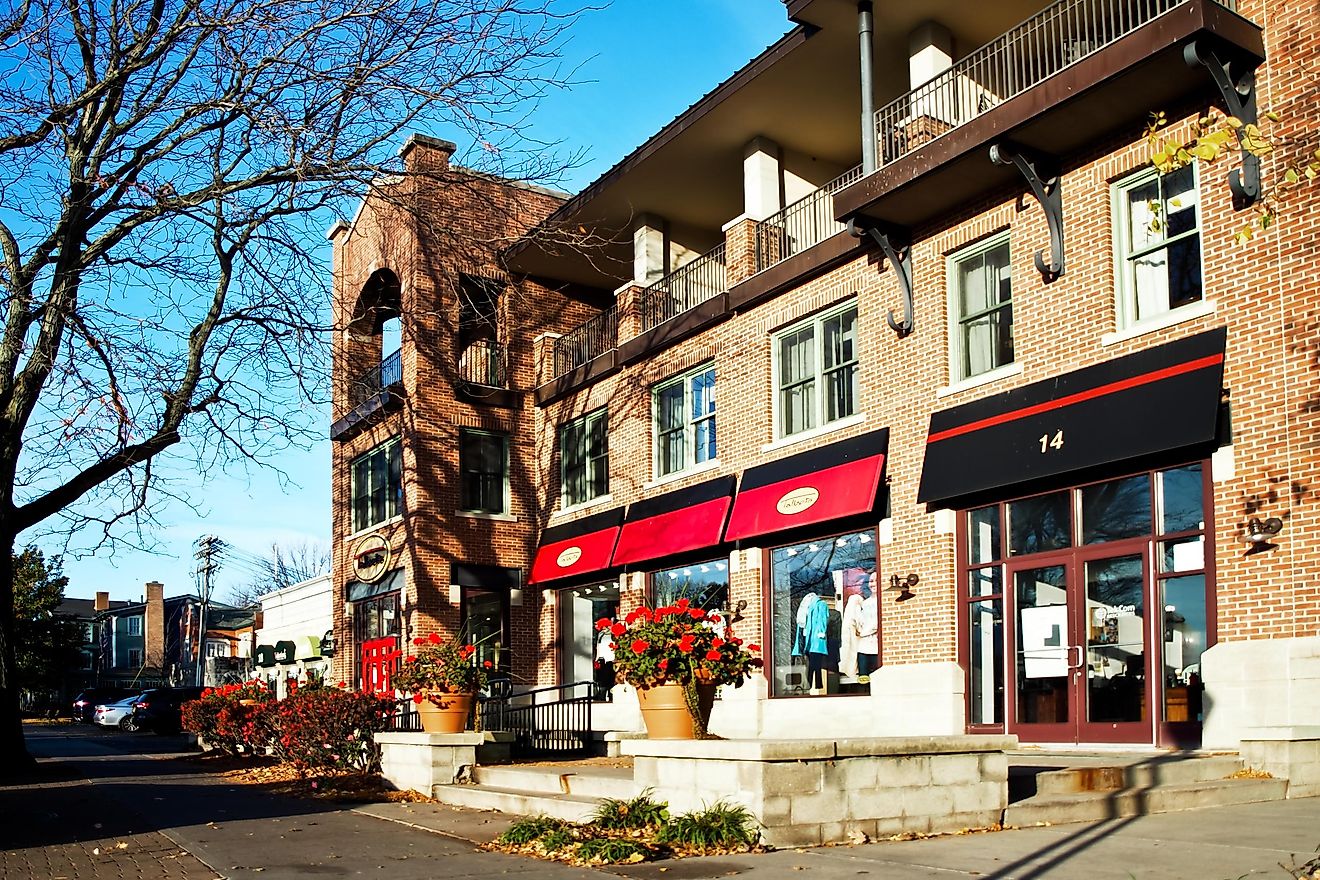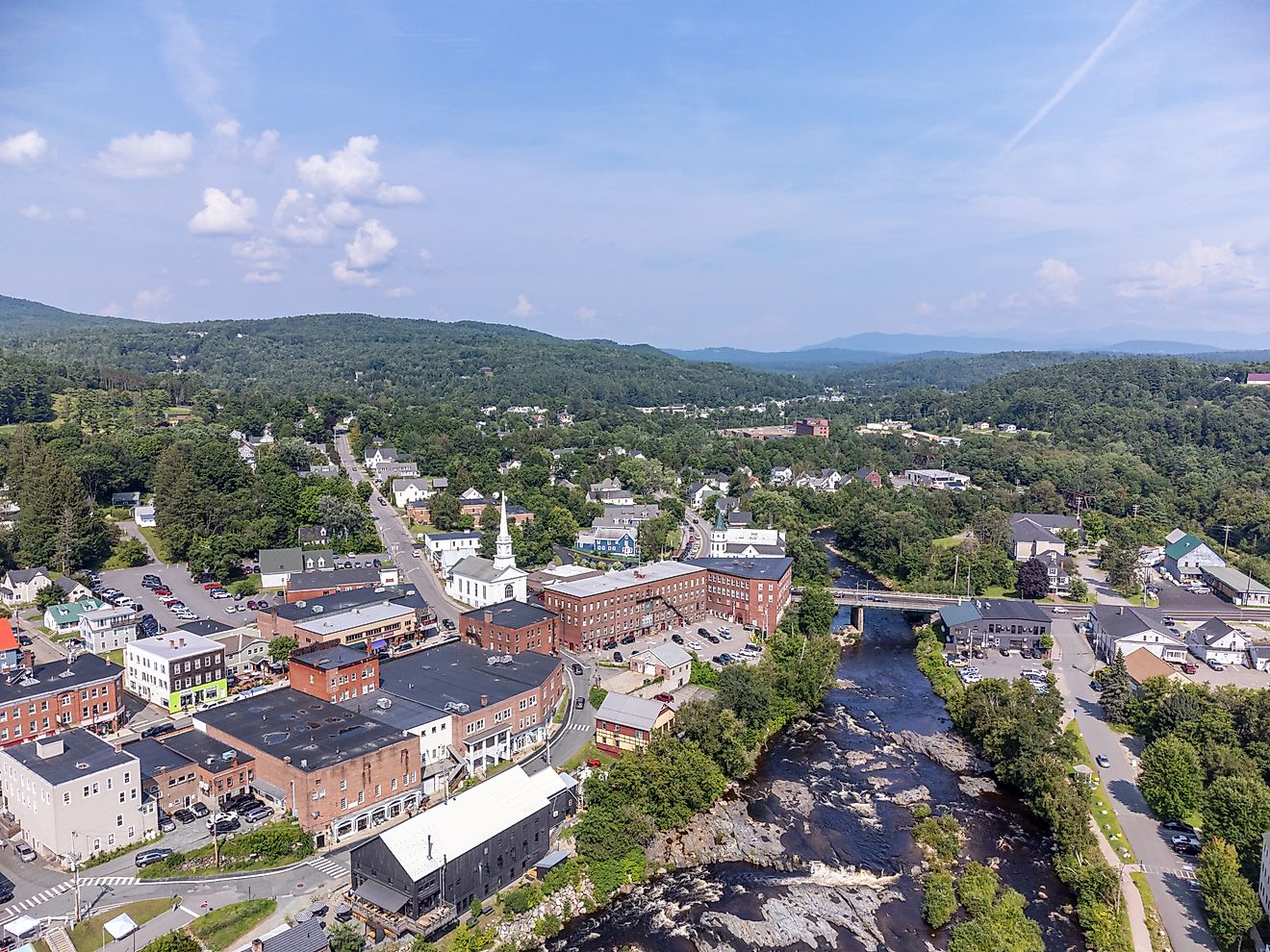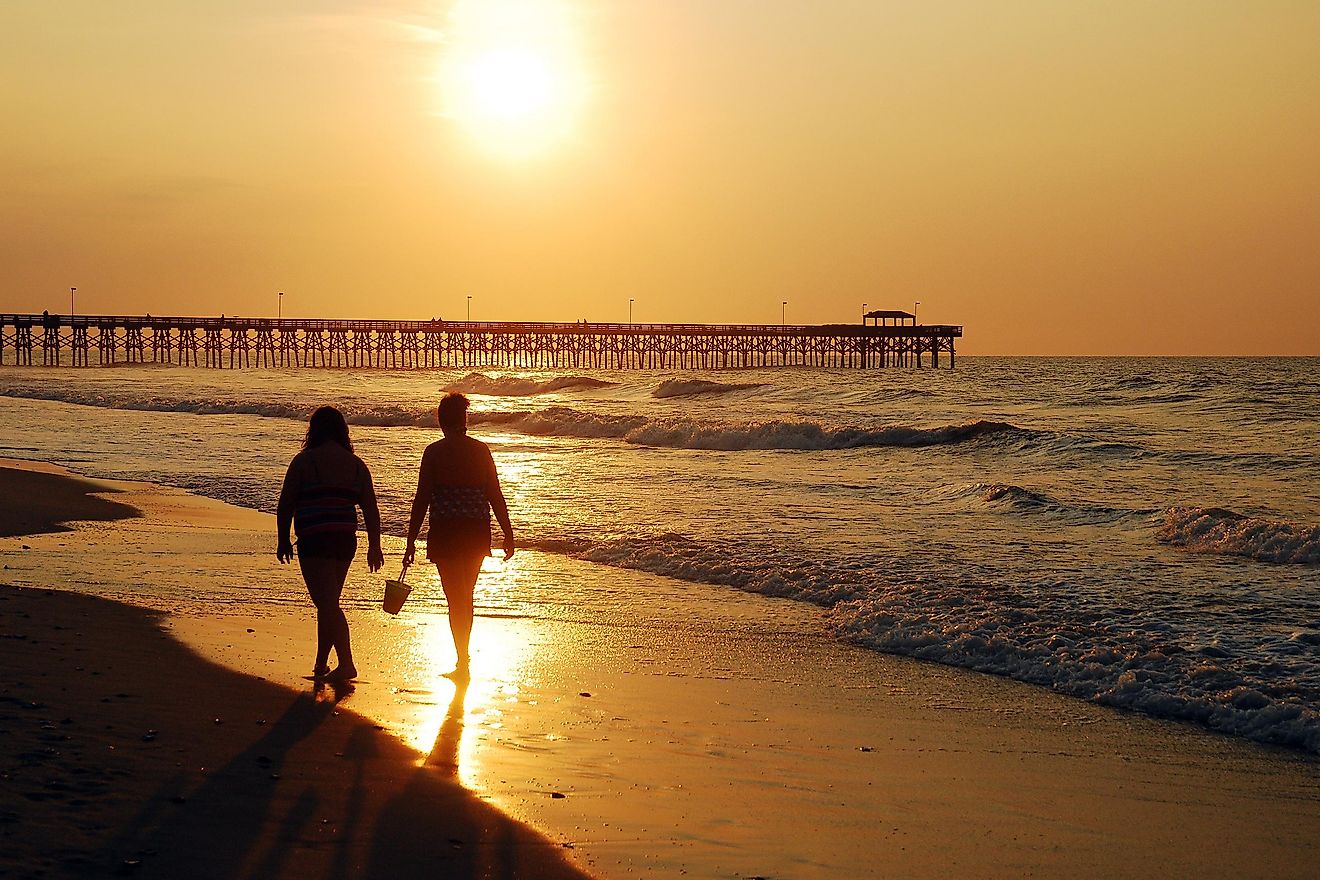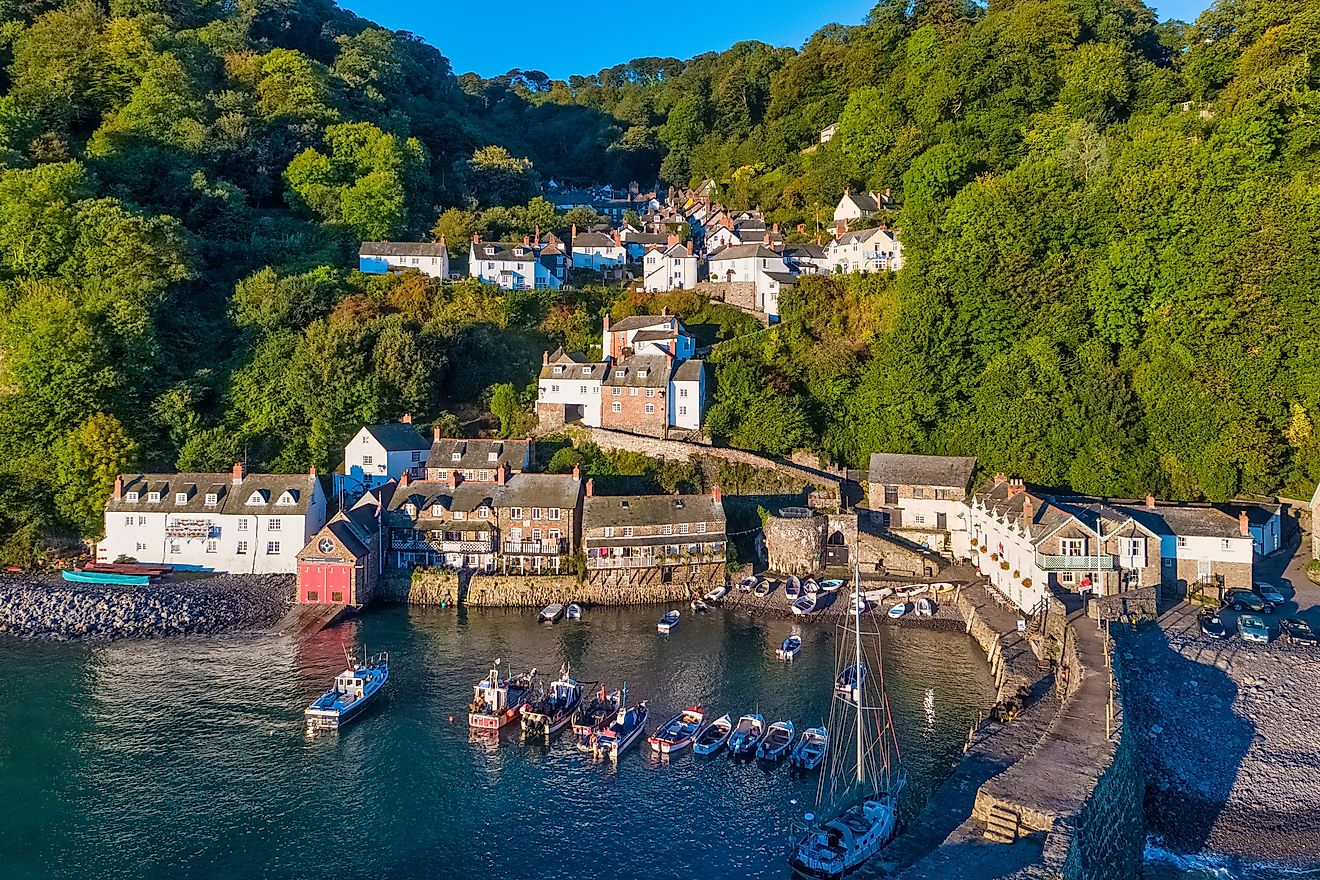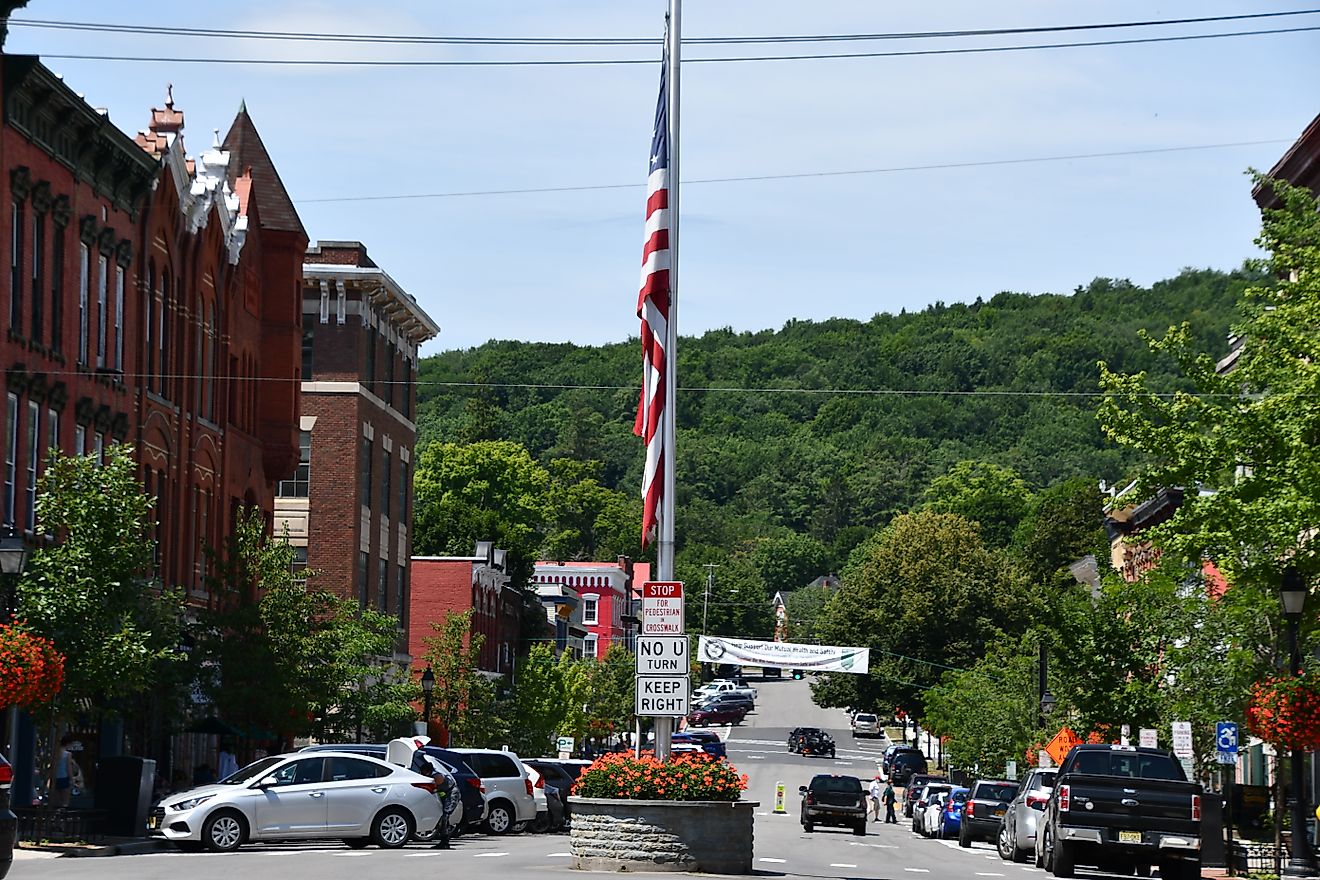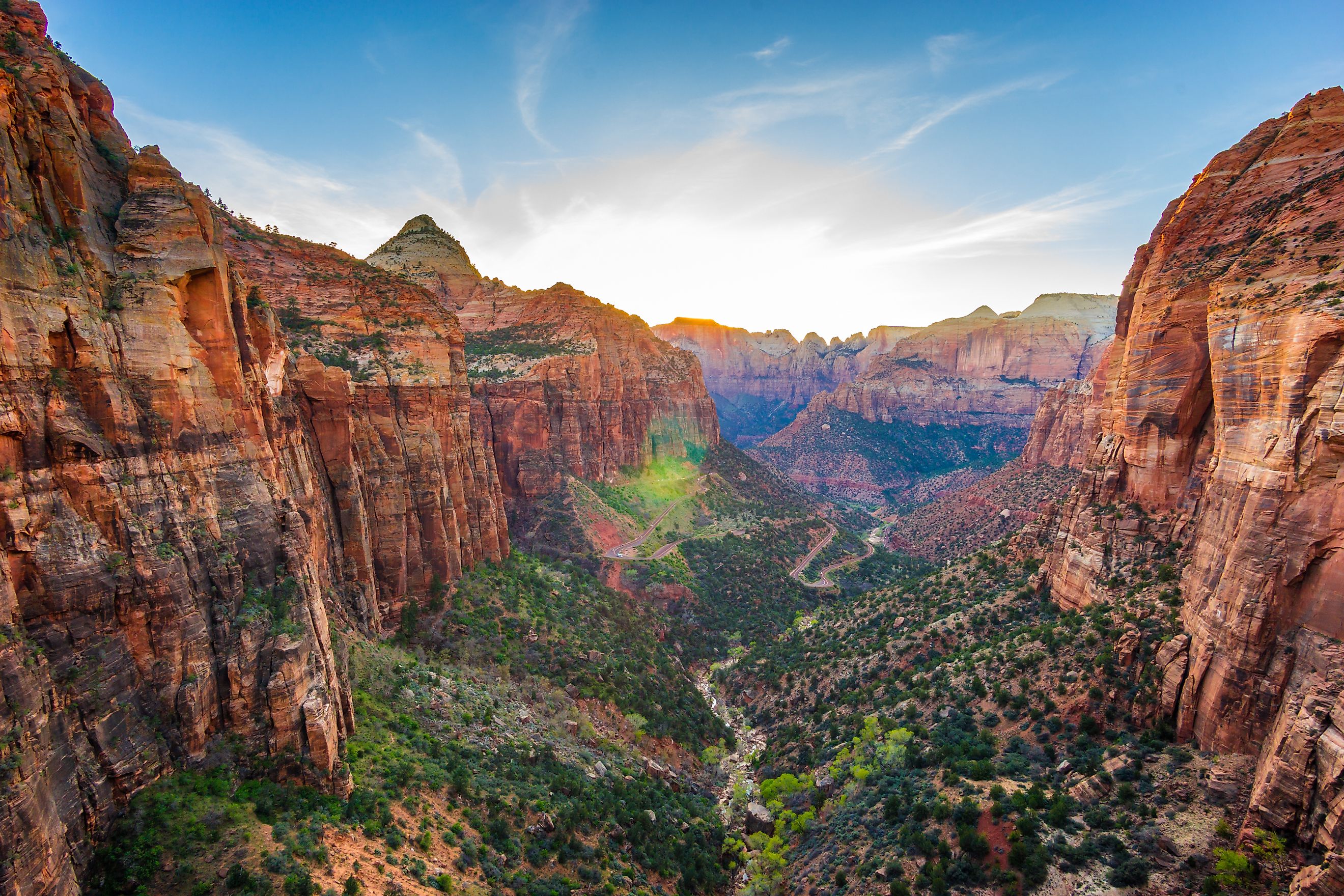
Zion National Park
Utah is a geographically diverse state covering an area of 219,890 km2 and located in the west-central region of the United States. This mountainous state comprises three distinct landform regions: the Rocky Mountains, the Colorado Plateau, and the Basin and Ridge region. Due to the state’s exceptionally rich natural diversity, many areas in the state have been protected as National Parks.
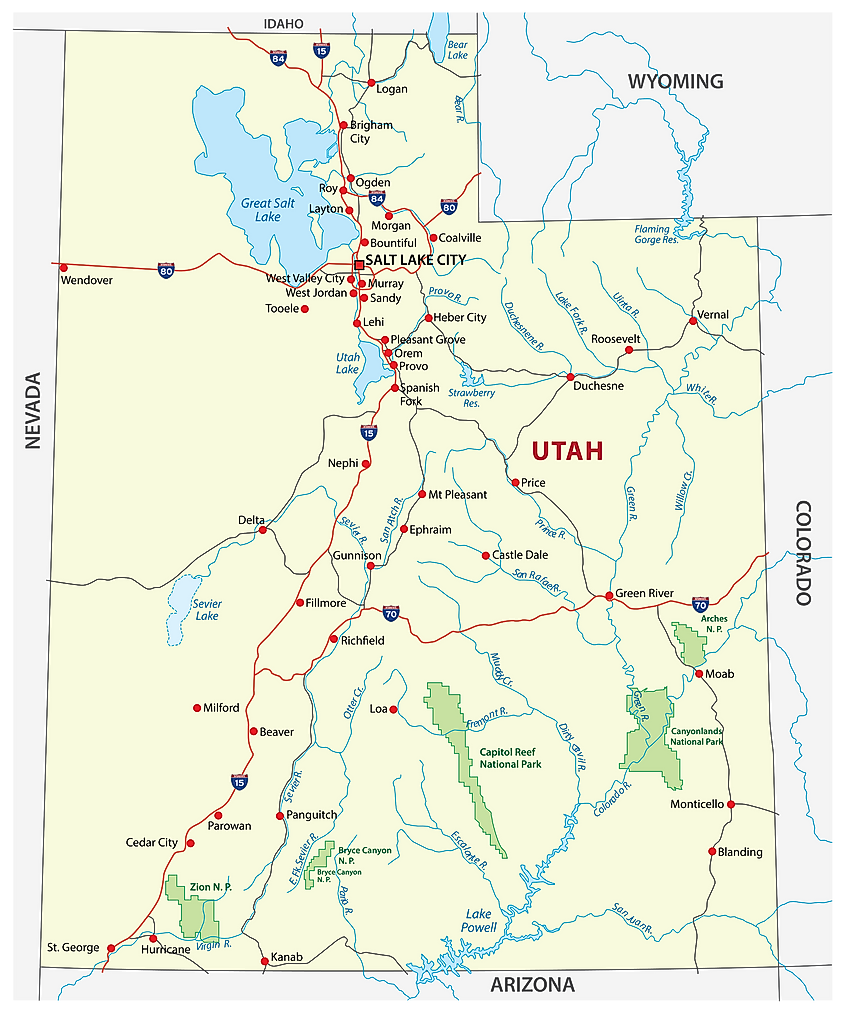
Situated in the southwestern part of Utah within the Iron, Kane, and Washington counties is the Zion National Park. The park occupies an area of 593.26 km2 and is positioned along the northwestern edge of the Colorado Plateau. The Grand Staircase-Escalante National Monument and the Bryce Canyon National Park are located to the east, while the North Rim of the Grand Canyon National Park is located to the south of the Zion National Park. Established on November 19, 1919, the Zion is the oldest National Park in the US State of Utah.
Geography
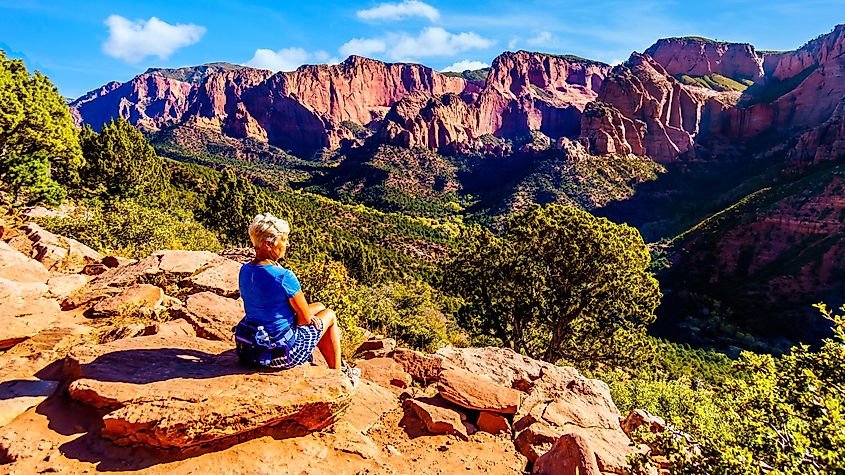
The Zion National Park comprises several natural features such as canyons, monoliths, forested plateaus, mountains, buttes, and rivers. The Park is on the plateaus of Kolob and Markagunt, adjacent to the confluence of three of North America’s significant geographic regions: the Colorado Plateau, the Mojave Desert, and the Great Basin. The northern part of the National Park features numerous canyons and other rock formations and is known as the Kolob Canyons. Situated in the Kolob Canyons part of the National Park is the Horse Ranch Mountain, which rises to an elevation of 2,662 m and is the highest point in the Zion National Park. The lowest point is at the Coal Pits Wash at an elevation of 1,117 m.
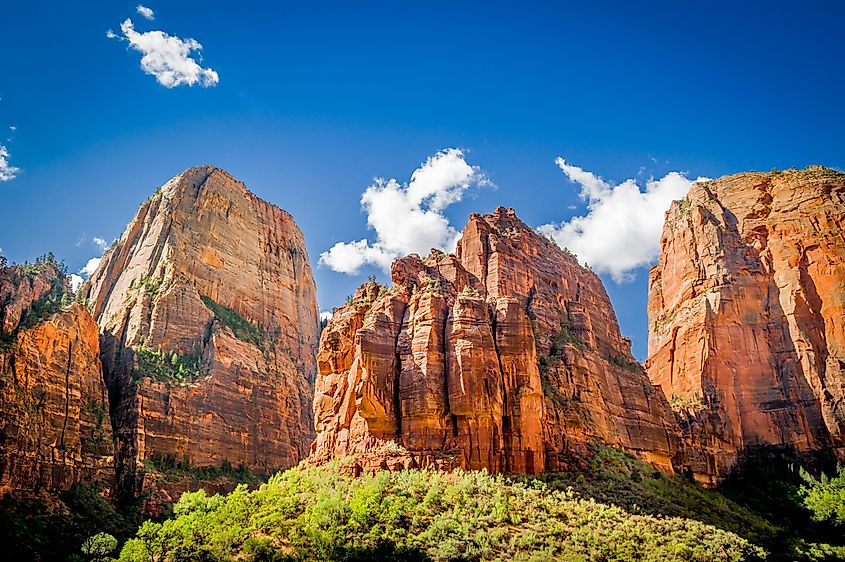
The most prominent feature of the Zion National Park is the 26 km long and 910 m deep Zion Canyon, which is located within the western part of the National Park. The North Fork Virgin River cuts through the deep red-colored Navajo sandstone of the Zion Canyon. It is believed that the geology of the Zion Canyon represents the climax of 150 million years of sedimentation, which mostly occurred during the Mesozoic Era in this part of the North American continent. Some of the other significant natural formations in the Zion Canyon include the Weeping Rock, Emerald Pools, Great White Throne, Court of the Patriarchs, Altar of Sacrifice, Angels Landing, and the Watchman. Located in the Kolob Canyons area of the park is the Kolob Arch, which is considered the world’s sixth-longest natural arch.
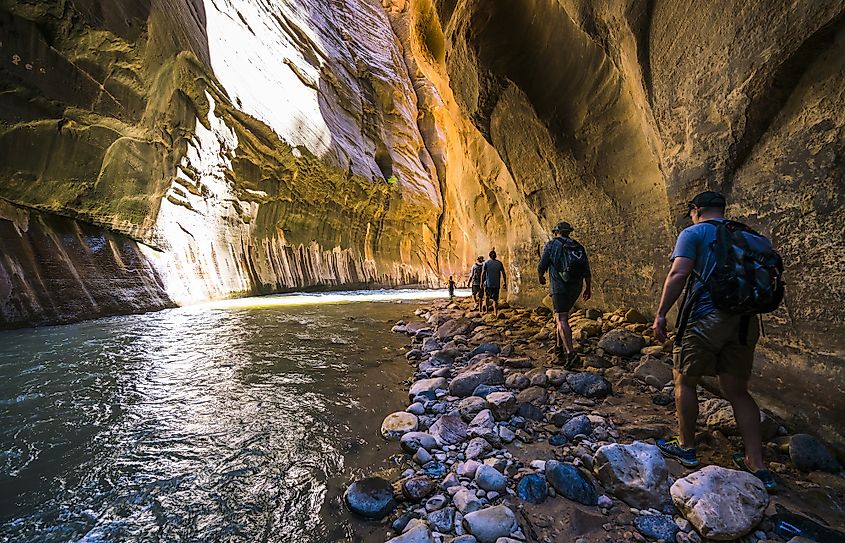
Hikers inside the Zion National Park. Editorial credit: Checubus / Shutterstock.com
According to the Köppen climate classification, the Zion National Park experiences a cold semi-arid climate with hot summers and cold winters and a moderate amount of precipitation throughout the year. The spring days in the Zion Canyon alternate between stormy, wet and warm, and sunny weather. Afternoon thunderstorms are quite common from mid-July to mid-September.
Wildlife
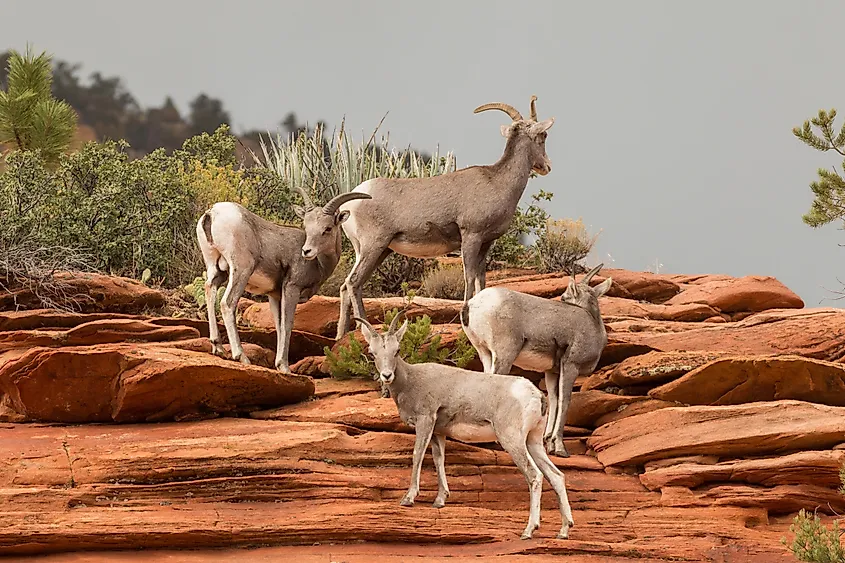
The diverse topography of the Zion National Park along with its varied soil types supports a range of habitats that hosts a unique mix of flora and fauna. The four types of life zones that are found in the park include deserts, coniferous forests, mixed woodlands, and riparian forests. Over 800 species of plants including prickly pear cactus, sagebrush, Indian paintbrush, Utah penstemon, prince’s plume, pinyon pine, juniper, ponderosa pine, scrub oak, and maple are found in the National Park.
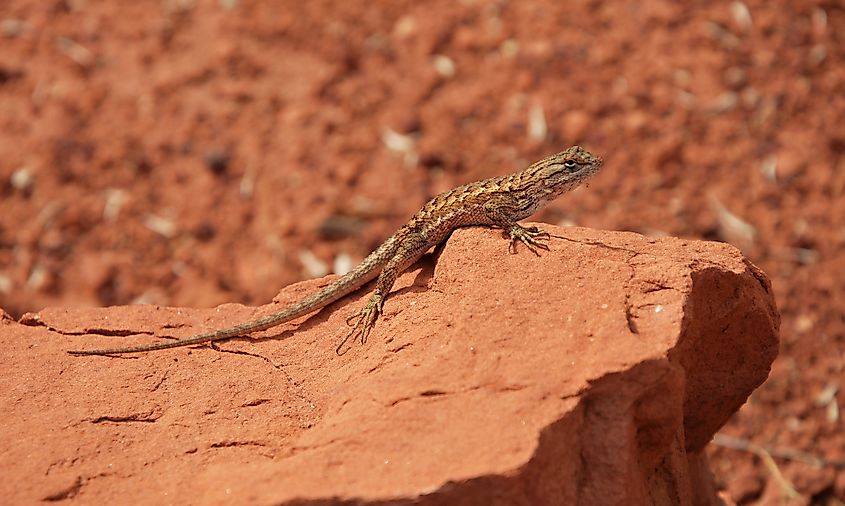
The Zion National Park hosts about 79 species of mammals, 28 species of reptiles, six species of amphibians, seven species of fish, and over 289 avian species. Some of the notable faunal species that are found here include rock squirrels, Merriam’s kangaroo rats, mule deer, desert bighorn sheep, jackrabbits, mountain lions, gray foxes, and ringtail cats. The important avian species that are found here include peregrine falcons, golden eagles, Mexican spotted owls, California condors, red-tailed hawks, canyon wrens, and white-throated swifts.
Brief History
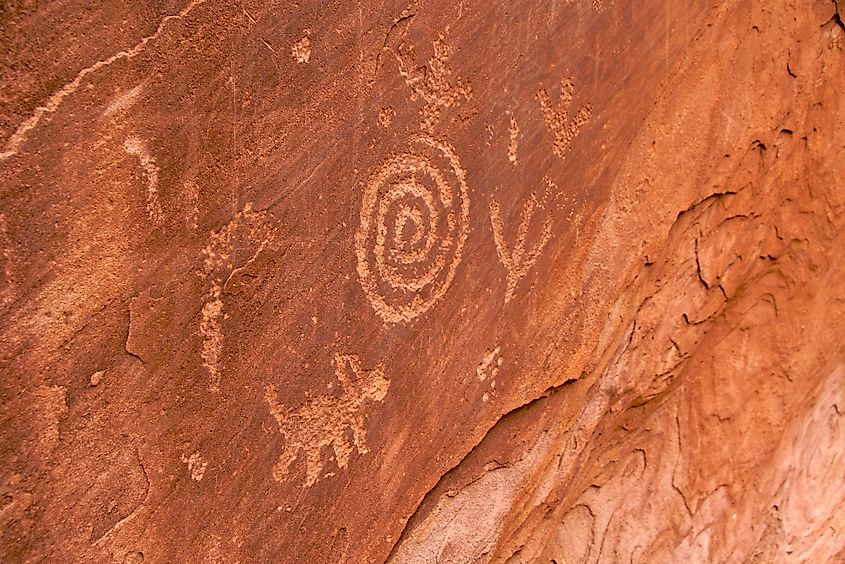
Archaeological studies have revealed that humans first settled in this region approximately 8,000 years ago. By 300 CE, some of these Archaic groups gradually developed into the semi-nomadic Basketmaker Anasazi Indigenous peoples. Throughout the years, several other groups of tribes including the Virgin Anasazi, Parowan Fremont, Ute, and Southern Paiute settled in the region. The area was first explored by European Americans during the late 18th century when the members of the Domínguez Escalante Expedition visited the area in search of a land route between California and Mexico (modern-day New Mexico).
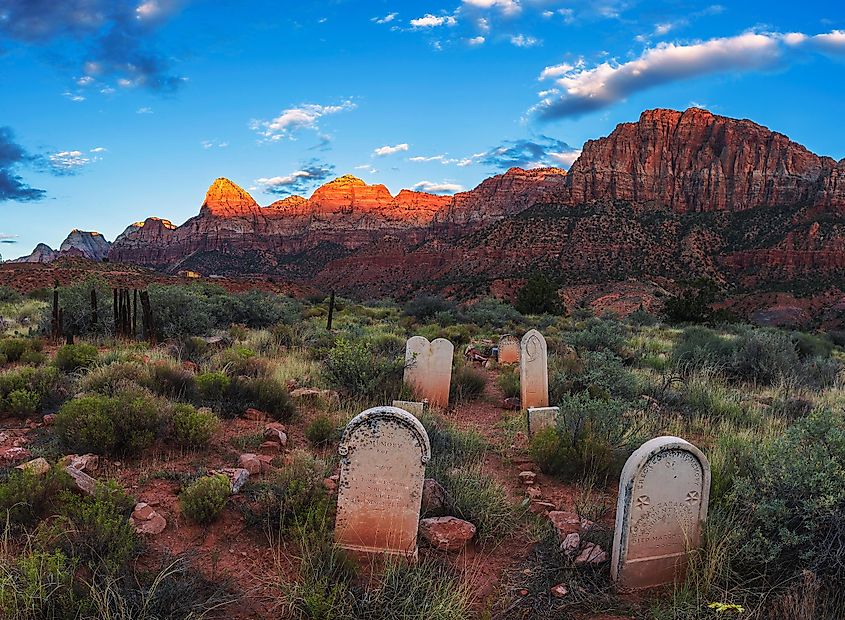
In 1847, some Mormon farmers settled in the Virgin River region. In 1858, the Mormon missionary and interpreter Nephi Johnson was the first to report about the Zion Canyon and soon after, Mormon settlements started to grow throughout the canyon region. In 1872, the American geologist John Powell visited the Zion Canyon and named it Mukuntuweap as he believed that was the Paiute name for it. The floor of the Zion Canyon was extensively farmed by the Mormon settlers until 1909, when a part of the area was proclaimed as the Mukuntuweap National Monument by US President William Howard Taft on July 31, 1909.
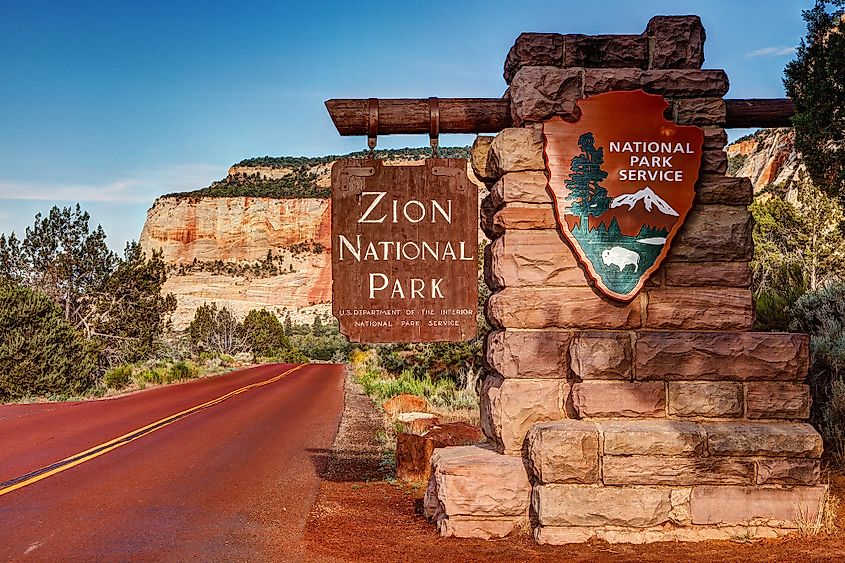
Horace Albright, the Acting Director of the National Park Service who visited the area, proposed the renaming of the area with the local Mormon name, Zion. Subsequently, more land was added to the park by the US Congress and on November 19, 1919, the Zion National Park was established. In 1937, the Kolob Canyons area was initially declared as a separate Zion National Monument but was eventually incorporated into the Zion National Park in July 1956. About 503.45 km2 of parkland was designated as Zion Wilderness by US President Barack Obama, under the Omnibus Public Land Management Act in 2009.
The Zion National Park is a major tourist attraction in the United States and attracts over 3 million visitors annually. The park offers several recreational activities like rock climbing, horseback riding, nature walks, camping, backpacking, hiking, and canyoneering to tourists who visit the Zion National Park.
